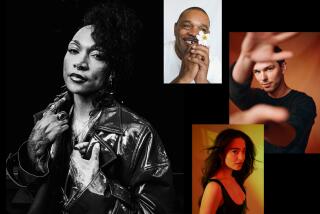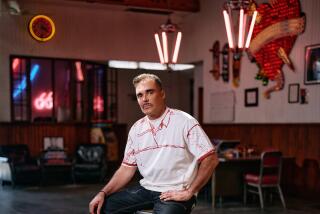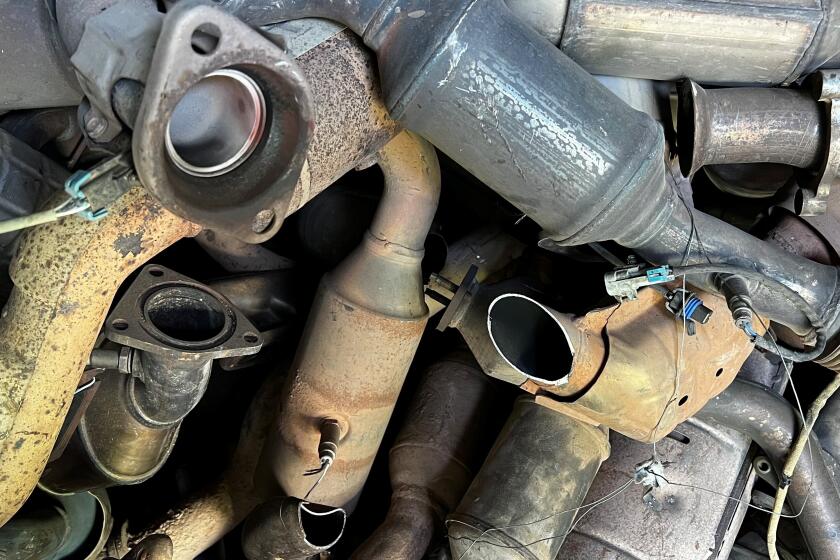Reporter Took His Best Shot as Photographer but <i> Sacre Bleu </i> It
- Share via
Just before leaving for Paris last month to cover the opening of Euro Disneyland, I must have been one confused reporter.
For starters, fires were still burning in Los Angeles, and much of The Times’ resources were being aimed at chronicling the violence and destruction that were consuming the city.
Although the flames never licked Orange County and there wasn’t much chance of getting assigned to an already-assembled army of reporters, it seemed strange just the same to be heading in the opposite direction from the story of the decade.
Hey, I’m not going to say that I begged to stay. After all, the assignment to follow a contingent of local officials on a tour of Disney’s French creation had been planned for months. It would deliver glimpses of future Disney development in Anaheim, which is a city on my beat.
What should have scared me most, though, occurred just two days before departure when a smiling photo editor handed me a Nikon “One Step” camera with the word that I would be taking my own pictures.
“No problem,” I remember him saying after schooling me on the various buttons, flashes and zooms. “Completely automatic; aim and shoot. Simple.”
I avoided panic. After all, I had taken a few tourist photos before. Pure art. There was also that photography course in college. Dr. Wooley was the professor’s name and the passing grade was a gift.
The newspaper must have had some inkling of my abilities since they had tentatively arranged to have a French free-lancer shoot the opening event of the trip.
No problem.
But while I was somewhere over the Atlantic still paging through my Berlitz “French for Travelers,” those photo plans went awry.
“You’ll do fine,” senior photo editor Don Tormey said on the telephone, explaining that the free-lance assignment had fallen through. Before hanging up, he provided directions to the nearest wire service office in downtown Paris, about 30 miles away from the Disney park.
There, technicians would develop the film and transmit it to Orange County.
No problem.
Inside some of the resort’s new hotels, I tried for a couple of artsy jobs before snapping more predictable photos of the locals touring some of the attractions and interacting with le Mouse.
By way of the city’s subway system (le Metro) and a taxi (I couldn’t believe the driver actually found the address from my first French scribblings on notebook paper), I arrived at the Associated Press offices with my batch of film.
Though not particularly proud of my product, I had made quite sure that I was standing still before pressing all the buttons. Apparently, I was not still enough. Even le Mouse was out of focus.
Somehow, we found some passable frames in the bunch and sent them home.
Since one of my stories was to explain Disney’s success at bringing a Metro station to its back gate--a concept in mass transit that has so far eluded Orange County leaders--I figured to get an easy shot of commuter traffic inside the Disney Metro station on my way back to the park.
The interviews had gone easily enough. Disney officials were ecstatic about their new terminal, the French were predictably unimpressed with its on-time efficiency and the Orange County delegation expressed notable envy.
How hard could it be to snap a picture in le Metro to go with that?
No problem.
Stepping from le Metro to the concourse at Disney’s Marne-la-Valle terminal, I found the perfect shot: a busy scene of tourists and employees rushing on and off le Metro. Somewhere in the background--barely recognizable--were a couple of French gendarme s. Another nice piece of color, I thought.
Un grand problem.
About the time I lowered the camera from my eye, the two crisply-clad gendarmes last seen in the far backround of the photo were in my face. One was pointing to my camera; the other was standing, arms crossed. None of them appeared to be a part of Disney’s welcoming committee.
For a moment, we just looked at each other. Then came frustrating attempts at communication. It was clear they weren’t happy about being part of my picture and wanted le film.
“I don’t speak French,” I said in English, reaching for my phrase book.
“We don’t speak English,” one gendarme said in flawless English, adding that I was not allowed to take pictures inside the terminal.
In a short time, a small crowd had gathered, and two more gendarmes arrived. I continued to plead my case. At stake was not only le Metro shot, but the same roll also contained some personal photographs of my first trip to Europe--the Eiffel Tower and Notre Dame.
At this point, French fluency wasn’t needed to understand I was losing this debate, badly. Whatever good will remained, however, was swept away when one of them asked my occupation.
“Journalist!” one reacted, looking to his colleagues and probably imagining their faces (out-of-focus though they surely would have been) showing up in the Los Angeles Times.
With no options left, but still having time to get the pictures I needed when these guys weren’t around, I finally settled on opening the camera back, exposing the train photo.
Early the next morning, I went back and got new subway pictures. No problem. It wasn’t until I got home a few days later and picked up my sightseeing photos that I learned the full extent of damage.
The Eiffel Tower shots, the ones I had taken on a pleasant day around noontime, looked like night shots of a lightning storm.
There were survivors, though. Some street scenes looked pretty good. There are also a few of the Arc de Triomphe that I like, even though I wasn’t able to get the whole Arc in any of the photographs.
Pure art.
More to Read
Sign up for Essential California
The most important California stories and recommendations in your inbox every morning.
You may occasionally receive promotional content from the Los Angeles Times.










